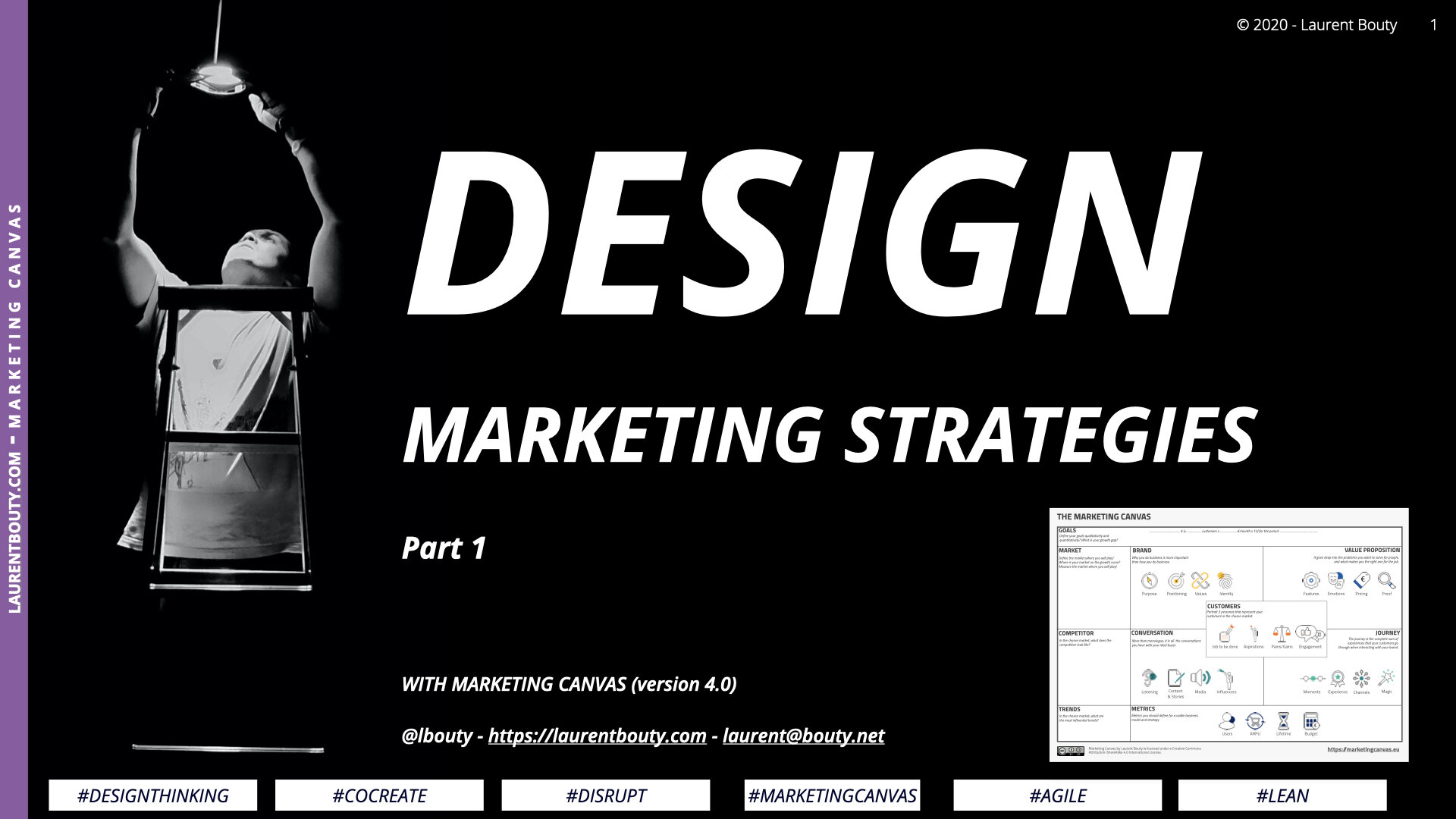In a nutshell
This comprehensive guide delves into the significance of Average Revenue Per User (ARPU) as a potent metric in business success. Through this exploration, businesses can better understand how much revenue they generate per user and how they stack up against industry competitors. The article not only explains how to calculate and evaluate ARPU but also provides practical strategies to leverage it for sustainable growth. This includes segmenting customer bases, forecasting revenues, and even assessing the effectiveness of various growth strategies like upselling or price optimization. To illustrate the concepts, the article incorporates a real-world case study from the green cleaning industry. Whether you're an entrepreneur, marketer, or non-marketer interested in business strategy, this guide equips you with the knowledge and tools to transform ARPU from a simple number into actionable business insights.
In the Marketing Canvas
The Marketing Canvas is a powerful tool for entrepreneurs and non-marketers to build a robust marketing strategy. It consists of six meta-dimensions, each with four sub-dimensions, for a total of 24 sub-dimensions defining your Marketing Strategy. One of these sub-dimensions is LIFETIME, which falls under the METRICS meta-category.
Defining Lifetime
Customer Retention has become a pivotal concern for subscription-based businesses in recent years. The idea of prolonging your subscribers' association with your business becomes indispensable if the ultimate objective is to generate profits. The long-established belief is that retaining existing customers is more cost-efficient than acquiring new ones, typically by a ratio of 1 to 6. Although the ratio might differ, we can all concur that spending money to acquire new customers is higher than retaining existing ones. Either way, the effect on your customer base is the same (+1 customer -1 lost or evading the loss of 1 customer). We often use the concept of churn (or attrition) to gauge the number of customers departing from your service during a specified period.
Churn rate, a critical metric, represents the percentage of customers discontinuing a company's product or service over a given timeframe. This metric is critical because it provides insights into the health of a company's customer base and its ability to retain its customers. Calculating the churn rate involves dividing the number of customers lost during a specific time period (e.g., a quarter) by the number of customers the company had at the beginning of that time period.
Monitoring churn rate is paramount for companies as it offers a clear image of the number of customers leaving the company, which directly impacts the company's profitability. A high churn rate could signify subpar customer service, inadequate product offerings, or even stiff competition in the market. Hence, it becomes imperative for companies to pinpoint the reasons behind a high churn rate and initiate corrective measures to curtail it.
Furthermore, tracking customer churn enables companies to evaluate how effectively they are retaining their customer base, thereby helping them adjust their customer retention strategies. Companies can exploit customer data to better comprehend their customers' needs, preferences, and behaviors, and modify their offerings and services to meet those needs. By proactively addressing the factors driving churn, companies can cultivate a more loyal customer base and secure long-term success.
Lifetime is an alternative perspective on this phenomenon. Lifetime refers to the duration (often in months) a customer stays with you. The exact specification of this definition can vary across different industries. For instance, in the mobile business, a customer must have received or made a call/SMS/data transaction during the specified period to be considered "active." One method to estimate the lifetime is by dividing 1 by your churn rate percentage. Lifetime is indicative of how successful you are at satisfying existing customers.
In the Marketing Canvas framework, we consider Lifetime as a pivotal metric. It's not a standalone number but tied intricately to your business objectives. Let's explore how it works in a scenario.
Imagine owning a business that generates €1000 a month from 1000 customers, with each spending €1. If you have a churn rate of 10%, you would lose 100 customers by the end of the first month, reducing your customer base to 900. Consequently, your revenue for the month drops to €900, presuming that the remaining customers continue to spend €1 each.
If the trend continues, you'll witness another 10% reduction in customers, leading to the loss of 90 more customers, and leaving you with only 810 customers. The impact on your revenue will be corresponding, reduced to €810. This continuous decline in revenue has a direct bearing on your business goals, making it increasingly challenging to generate profits, let alone achieve growth, when the customer base is shrinking rapidly.
To balance the loss of customers and stabilize revenue, you would need to acquire new customers at a rate faster than you are losing them. This, however, can be a costly and time-consuming task. Therefore, customer retention becomes a cornerstone for the long-term sustainability of your business.
Tools for Lifetime
A plethora of tools exist in the market today, aimed at aiding businesses in calculating and improving the lifetime of their customers.
Customer Relationship Management (CRM) Systems: CRM systems like Salesforce or HubSpot help businesses track and manage customer interactions, allowing them to understand better and increase customer lifetime value.
Subscription Management Platforms: Platforms like Chargebee or Zuora help businesses manage their subscription billing and provide insights into metrics such as churn rate and customer lifetime value.
Customer Analytics Platforms: Tools like Mixpanel or Amplitude allow businesses to track user behavior and engagement, enabling them to identify potential churn risks and take proactive measures.
Customer Feedback Tools: Tools like SurveyMonkey or Qualtrics allow businesses to gather feedback directly from customers, helping them understand the reasons for customer churn and find ways to improve customer retention.
Translating Lifetime into Action
Transforming the concept of 'Lifetime' into tangible action involves a thorough understanding of your customer base, their needs, their behaviours, and effectively addressing their pain points.
Segment Your Customers: Divide your customer base into segments based on their behaviour, usage, or revenue generated. This allows you to understand the different types of customers you have and develop strategies tailored to each segment.
Develop Customer Retention Programs: Develop strategies aimed at improving customer loyalty. This could be through a loyalty rewards program, personalized communication, or by improving customer service.
Identify At-Risk Customers: Use predictive analytics to identify customers who are at risk of churning. Once identified, you can take proactive measures to retain them.
Improve Customer Experience: Regularly review and improve your product or service based on customer feedback. Ensuring a high-quality customer experience is one of the best ways to improve customer lifetime.
Question
Is the Lifetime of your users helping you achieve your goals?
It is crucial to evaluate whether your user lifetime is aiding you in achieving your business goals. For a comprehensive evaluation, you can rate your agreement with the following statements on a scale from -3 (completely disagree) to +3 (completely agree):
You are capable of measuring the user's lifetime (1/ churn) because you know who is buying and using your products and services.
Your churn level is below or equal to the average market churn level.
The historical trend of your churn evolution is positive (growth) and presents a positive outlook for the next year.
Your CRC (Customer Retention Cost) is aligned with your CAC (Customer Acquisition Cost). The sum of CAC+CRC is 20-30% for mature businesses and 50-70% for startups (as a percentage of revenue).
Your scores can help pinpoint areas of strength and those requiring attention. The higher the score, the more effective your customer retention strategy is, and vice versa. It's always a good practice to revisit these scores periodically to gauge improvement or diagnose worsening situations.
Marketing Canvas Method - User Lifetime and Churn
Green Clean Use Case
Let's take the example of Green Clean, a hypothetical green energy provider. Their product is a monthly subscription service providing households with electricity generated from renewable sources.
Understanding Lifetime: By analyzing data, Green Clean realized that the average customer remained subscribed for 24 months before churning.
Improving Lifetime: Green Clean then launched a loyalty program offering discounts on long-term subscriptions. This program incentivized customers to commit to the service for longer periods, thus increasing the average lifetime value of a customer.
Evaluating Improvement: After six months, Green Clean evaluated the effect of their loyalty program. They found that the average lifetime increased to 30 months, indicating a successful customer retention strategy.
This example emphasizes the importance of understanding, measuring, and taking action to increase the 'Lifetime' of customers, consequently improving overall business performance.
Conclusion
In a world with increasing customer acquisition costs and stiff competition, focusing on increasing the lifetime of your customers can be a game-changer. The concept of 'Lifetime,' although simple on the surface, is multifaceted, impacted by various factors from customer satisfaction to the effectiveness of your retention strategies.
Understanding the average lifetime of your customers and working on strategies to improve it can result in enhanced customer loyalty, better word-of-mouth marketing, and improved overall business performance. Regularly evaluating these efforts and adapting based on customer feedback and market changes is key to staying ahead in today's dynamic business environment.
Invest in customer retention, monitor 'Lifetime' closely, and watch your business thrive.
Sources
HUBSPOT, What is customer churn, https://blog.hubspot.com/service/what-is-customer-churn
HBR, The Value of keeping the right customers, https://hbr.org/2014/10/the-value-of-keeping-the-right-customers
Hubspot, Here’s Why Customer Retention is So Important for ROI, Customer Loyalty, and Growth, https://blog.hubspot.com/service/customer-retention




































